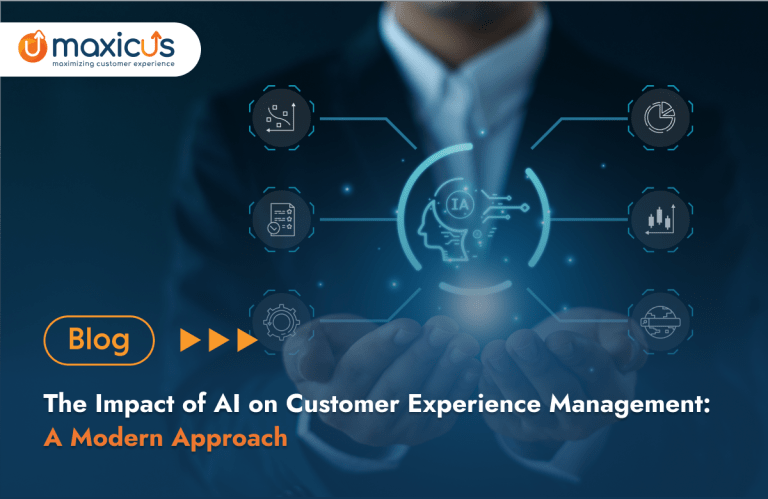How phygital customer experience is breaking the barriers between brands and customers?
Indeed, a good customer experience often begins at the edges, and businesses, today, are offering more evocative shopping experiences. They have been experimenting with a wide range of connected technologies in order to deliver exceptional experiences which enhance customer engagement and loyalty. Customer experience is getting richer day by day. Therefore, brands are upgrading their standards and looking to provide more sensory and better connected digital customer experience: Phygital customer experience.
Consumers have started to expect more from brands. They look for more comfort and conviction while purchasing the product. The digital era has paved the way for next-gen customers and it’s no longer deemed odd to go shopping online. As 72% of internet users shop online (Source), the phygital experience is a growing reality, merging online and physical sales.
Despite the growth in digital purchases, customers are still missing the ‘feel’ of going to stores and buying the product after experiencing it. Now, phygital is bridging the paradox between digital and physical through personalized and stimulated customer service experience. Phygital connects the online and offline world, allowing businesses to deliver a more intimate and dynamic customer experience. Brands that will remain at a standstill will either be left behind or get crowded out.
Phygital: A definitive guide
What is a phygital customer experience?
Phygital unites both the online and offline spaces by exercising the best aspects from each context to create a comprehensive, stimulated, and satisfying experience. However, it separates itself from other digital experiences in customer service with its multichannel focus approach, where it makes sure that the customer’s buying journey is familiar and fluid.
The customers browse and buy but they would also see, touch, and try to experience the product virtually. Despite the fact, the world is available on the smartphone; most of the consumers prefer buying products after experiencing it, especially, with consumer durable goods. For example, while buying a smartphone itself, we generally do like to experience it first in our hands, feel the product, talk to an executive and then, make decisions. This simply means interpersonal interactions remain in priority and are highly valued by consumers. Brands know this, which is why they imply physical and emotional components into customer’s buying journey.
Now, let’s talk about how brands are articulating it with customer service. Suppose you are a customer who is interested in buying a washing machine and not willing to visit the store. Instead, you approached a customer service agent to help you through the product details. Traditionally, the representative would tell you the specifications at a fast pace which is not sufficient to make a decision on the product. Hence, you might have walked away with so many questions in mind. Unless you see and feel the product, there will always be doubts.
Suppose, buying home appliances using augmented reality would one of the fine phygital experience examples. It is an augmentation of the physical reality that is altered through smartphone cameras. Customers can see and feel the product virtually in an augmented space through video calls.
Elevate your customer experience game with Phygital
Here, businesses are turning this phenomenon around. With the introduction of phygital customer service, brands have eliminated boring product descriptions. The agent and customer interaction happen on a video call where the agents will give customers a live product demo. Leveraging technologies like autofocus cameras and AR glasses, businesses are developing a tangible virtual space for customers, where they can ask the representatives to touch and show the different specifications and switches; for example, and feel the product virtually. Using TFT or LED screens, the representatives show the product features and specifications one after another, which is more impactful in nature. Agents talk through the whole buying process in the same virtual environment, creating a similar store-like experience.

Phygital space allows brands to interact with customers with more immediacy, immersion and fast. It is definitely getting the better of other customer service channels and brands rarely need to spend huge. Going phygital not only improves customer experiences but has been proved to be effective to satisfy hyper-connected and demanding consumers by meeting their expectations through multiple platforms.
As 2021 is full of Gen Z and Millennial customers, which is ideal for the phygital environment, will force brands to straddle between online and offline that fits with the phygital experience, a way to improve customer experience.
Deliver A Personalised Shopping Experience at Home
How Phygital customer experience is breaking the barriers between brands and customers?
The goal of phygital is to stitch the distance between physical space and digital technologies which eventually allows customers to dive into virtual & augmented reality space and creates a more intuitive, smarter, and more personalized shopping experience.
This definitely sounds ambitious but the last mile will be the new lifeline.
With the introduction of phygital customer service, in stores, floor salesmen will be replaced with the delivering salesmen with an ability to deliver prompt and defined customer experience. The traditional methods of delivering customer experience will be transformed into a more professional and presentable way that incorporates live product demo on the go. In the coming future, the quality of the phygital customer experience will determine customer retention.
Virtual stores will be the new supermarkets of the future. After the pandemic, the world has seen a paradigm shift, physical store visits are making way for virtual visits or virtual user experience and it will be the new in-store, for customers in the future. The product discovery and navigation will be redefined and will determine the growth in the purchase funnel. Phygital is the new customer service and requires a similar investment but a more focused approach.
The customers still want to see a real-life demo before purchasing the product, even in the virtual setting. Today’s customers like to get the store-like experience at home, as it saves them time, money, and energy. Thus, an on-site product demo before the sales pitch is crucial and highly rated in the sales process. When consumers are no longer stepping up to visit the stores, then, the stores have to go to them.
Here, phygital is breaking the barrier between brands and customers with real-life product discovery experiences. In phygital space, all the products are in real-form showcased virtually. The representatives will give a live demo of the product and guide the customer to purchasing in the same virtual space.
Phygital customer experience is not only a table stake but can be a winner in making a sale. It, still, has a long way to go when brands of all sizes, categories, and sectors will look to provide phygital experiences. It’s time for brands to up their ante and embrace phygital customer service and make phygital the new normal in the customer experience space.
Success story of a Fortune 50 company generating 300M in sales revenue through virtual selling
Conclusion
Offering a phygital experience is not about dispensing machines and technology in the physical space. It is more about adapting the environment, unifying processes to establish a customized experience, and reshaping the customer journey. Customer experience in the phygital dimension allows brands to get close to the customers and knows their perspectives about the product first hand. With phygital, possibilities are countless. Autonomous environments will further create intelligent customer journeys.
Businesses need to be mindful that in order to provide memorable experiences, the challenge would be to keep connected to their strategic goals. Only then, the phygital transformation will be consistent and sustainable.
Leverage the phygital strategy to engage your consumers between online and offline experiences and ensure that they can migrate between them with ease. Stimulating the emotional quotient or EQ by creating more human interaction turns customers towards the brand which converts into a sale, mostly. Phygital offers a connected customer experience where digital and physical will coexist throughout the customer journey. Businesses are no longer talking about the digital customer experience; instead, they are adopting connected customer experiences.










